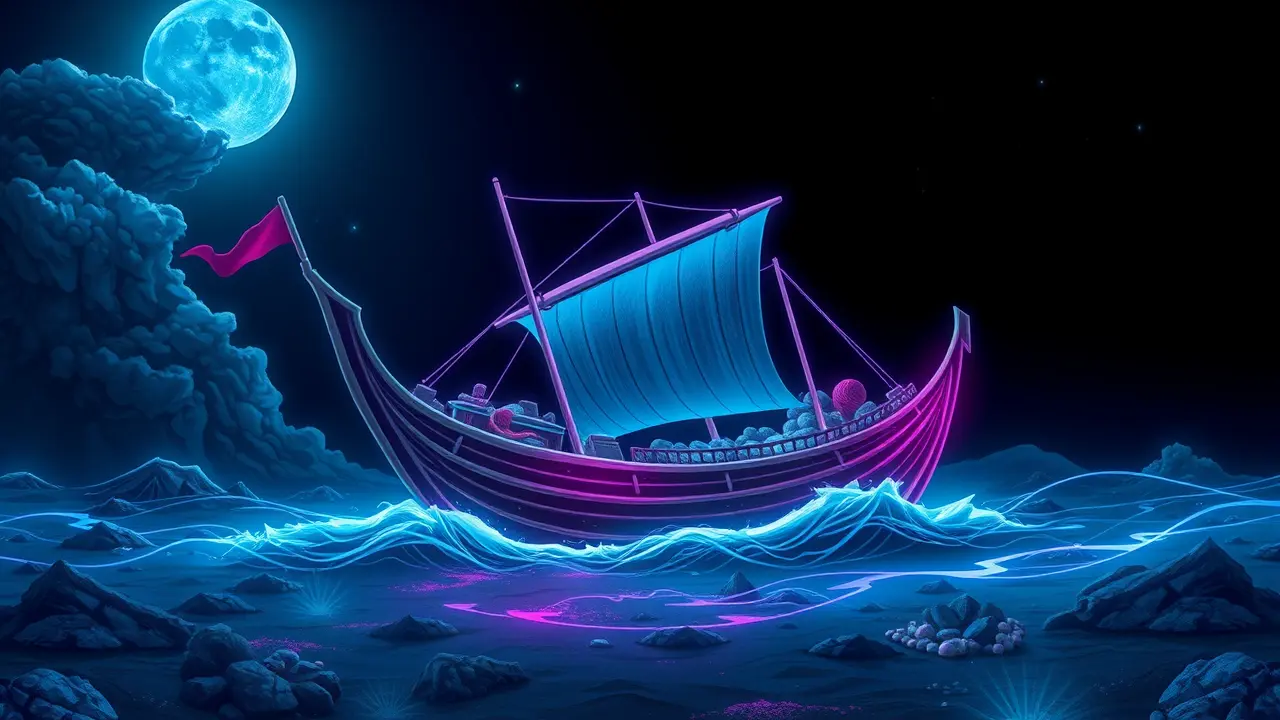
SciencearchaeologyExcavations and Discoveries
Typhoon Exposes Centuries-Old Shipwreck in Vietnam.
RA
Rachel Adams
4 hours ago7 min read
The fury of Typhoon Kalmaegi, a stark reminder of our increasingly volatile climate, has inadvertently ripped back the curtain on a profound historical secret, exposing the skeletal remains of a centuries-old shipwreck along the fragile coast of Vietnam. This was not a gentle unveiling but a violent one, where severe coastal erosion, exacerbated by the storm's immense power, carved away the sands that had safeguarded the vessel for generations, providing archaeologists with a heartbreakingly narrow and precarious window to salvage what could be a historically significant find before the sea reclaimed its own.Initially discovered in 2023 off the storied coast of Hoi An, a UNESCO World Heritage site long celebrated as a pivotal Southeast Asian trading port, the ship’s heavy wood-ribbed hull, surviving hundreds of years of rough seas in a state of near-perfect preservation, represents a time capsule from an era of bustling maritime commerce. Measuring at least 17.4 metres, the vessel was tragically resubmerged by the very tides that revealed it before Vietnamese authorities could mount a proper reclamation effort, a race against time and nature that underscores the immense challenges of underwater archaeology. While experts have not yet formally dated the wreck, preliminary findings and its location point tantalizingly towards the prosperous Dai Viet period or even earlier, a time when Hoi An was a critical nexus in a sprawling network that connected local dynasties with Chinese, Japanese, and European traders, carrying silk, ceramics, and spices.The ship's construction, particularly its robust, timber-heavy frame, offers a tangible blueprint of ancient shipbuilding techniques, potentially revealing technological exchanges and cultural adaptations that shaped regional seafaring. This discovery forces a sobering reflection on the dual role of climate change in both threatening and revealing our heritage; as rising sea levels and intensifying storms accelerate coastal degradation worldwide, they are simultaneously acting as unpredictable and destructive agents of archaeological discovery, unearthing sites only to threaten them with immediate destruction.The situation in Hoi An mirrors global crises, from Viking ships emerging from melting Norwegian ice to prehistoric forests being exposed on Welsh coastlines, creating an ethical dilemma for conservators who must balance urgent rescue archaeology with the immense costs and logistical nightmares of such operations. Dr.Nguyen Thi Lan Phuong, a marine archaeologist with the Vietnam Academy of Social Sciences, lamented the lost opportunity, stating, 'Each timbre we recover is a sentence in the story of our ancestors’ journey across the oceans. To see it slip back beneath the waves is a profound loss, but it also galvanizes our resolve to develop faster, more responsive preservation technologies.' The potential cargo, still locked within the submerged hold, could rewrite chapters of economic history, detailing the flow of commodities and the invisible social connections forged across the South China Sea. This event is a poignant metaphor for our relationship with the past—a fleeting glimpse of a world we thought was lost, delivered by the very environmental forces that now jeopardize our future, reminding us that the secrets of history are as fragile and ephemeral as the coastlines that guard them.
#featured
#Vietnam
#shipwreck
#Hoi An
#Typhoon Kalmaegi
#coastal erosion
#salvage
#archaeology
Stay Informed. Act Smarter.
Get weekly highlights, major headlines, and expert insights — then put your knowledge to work in our live prediction markets.
© 2025 Outpoll Service LTD. All rights reserved.